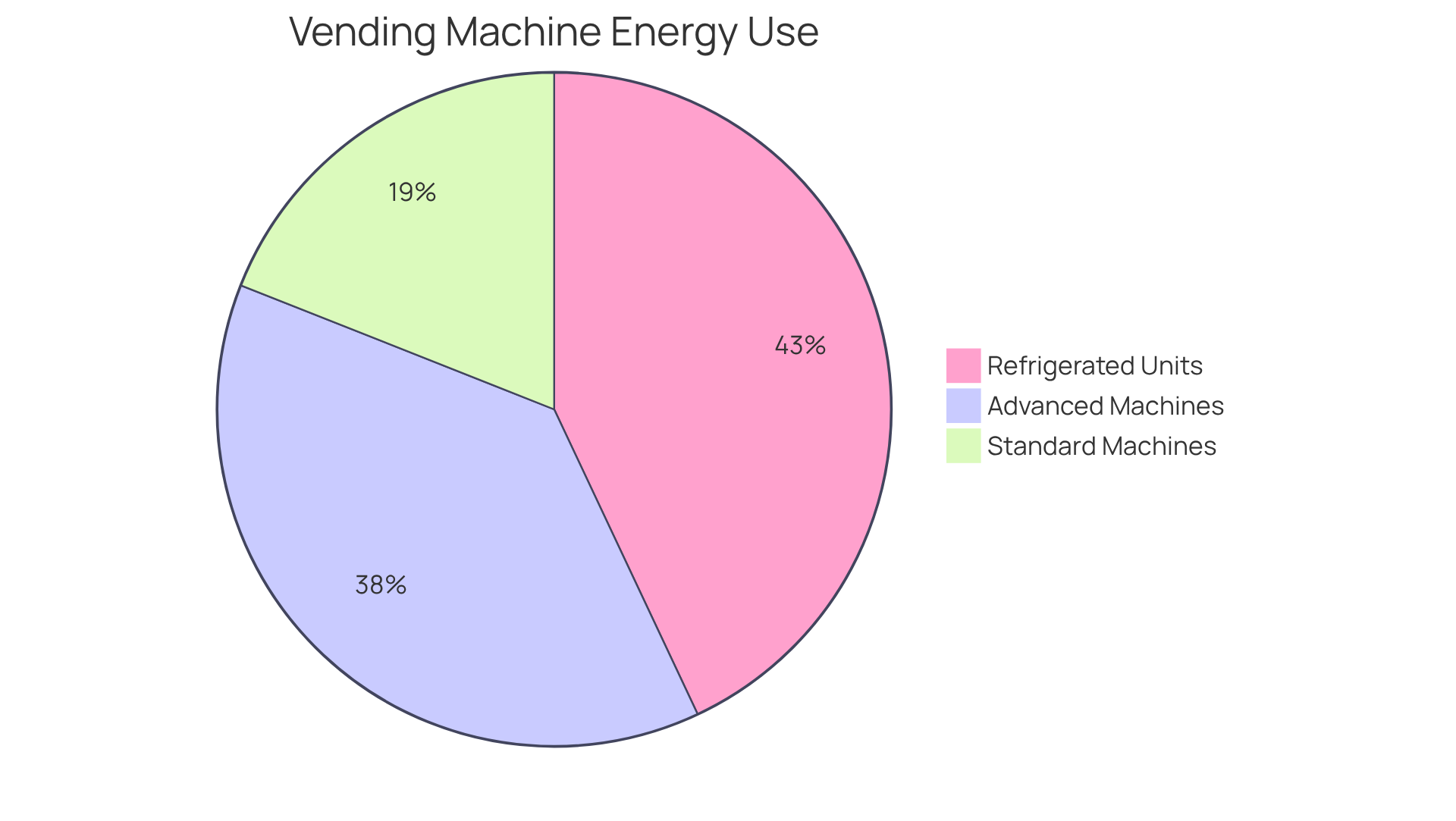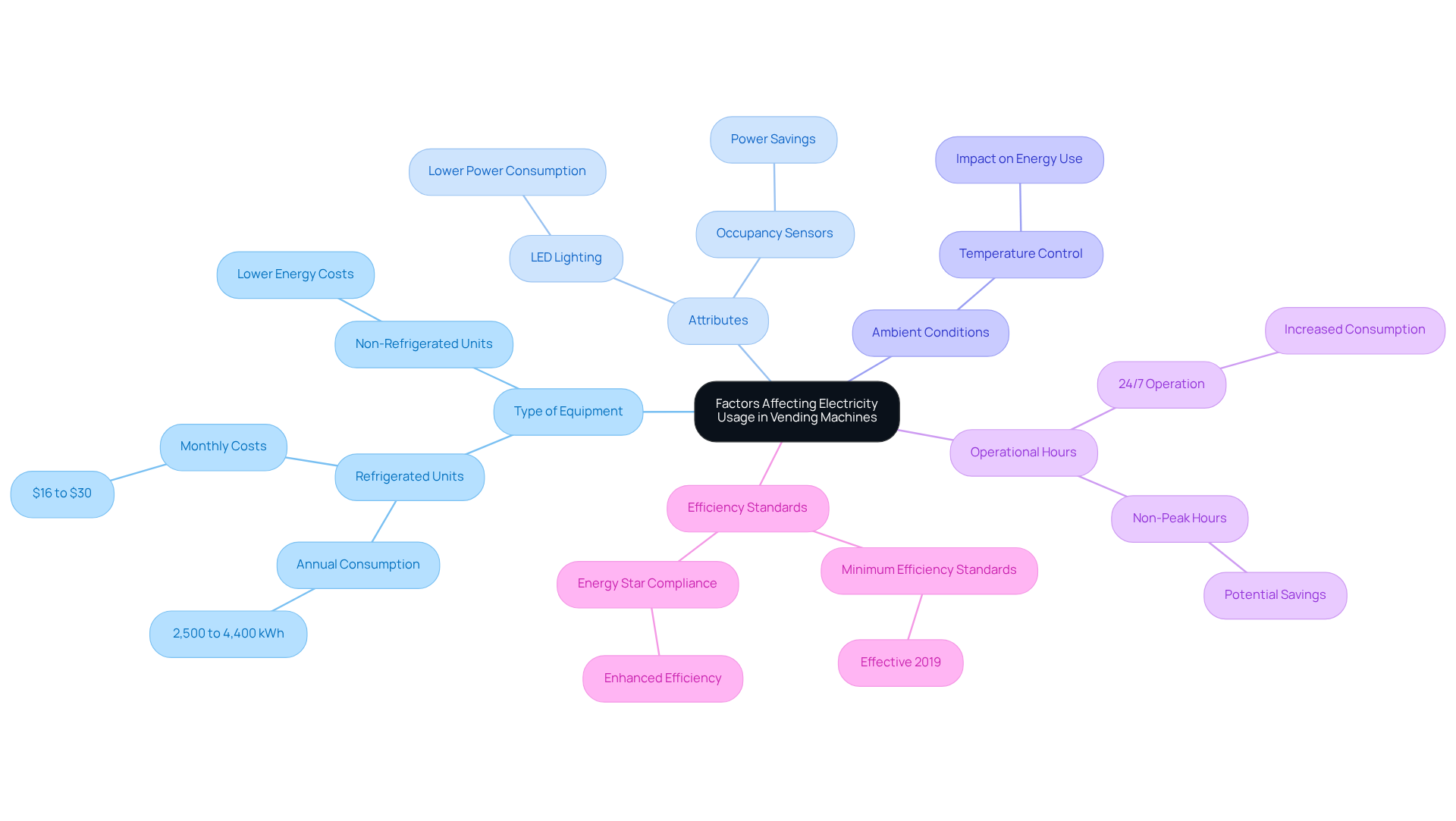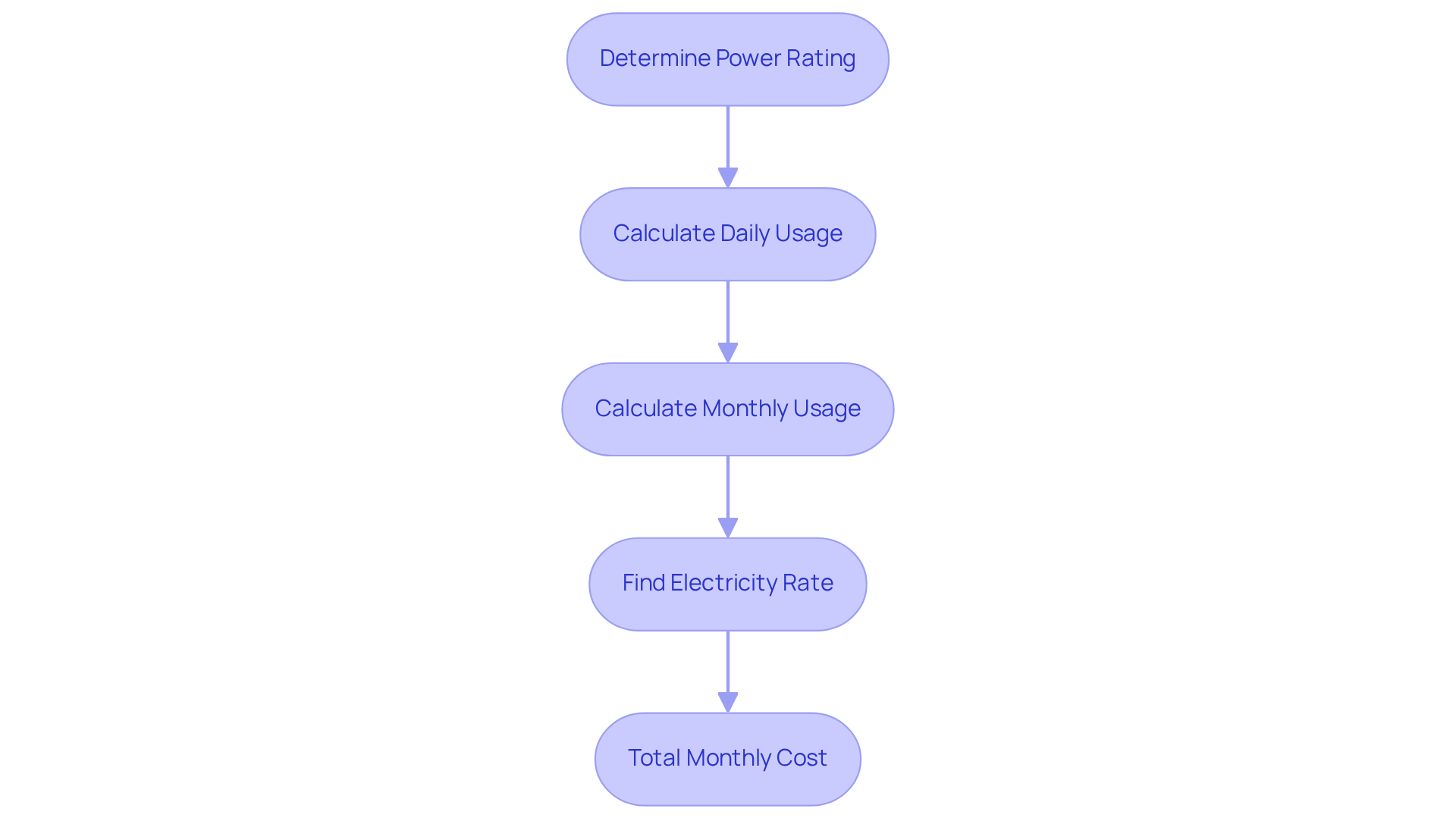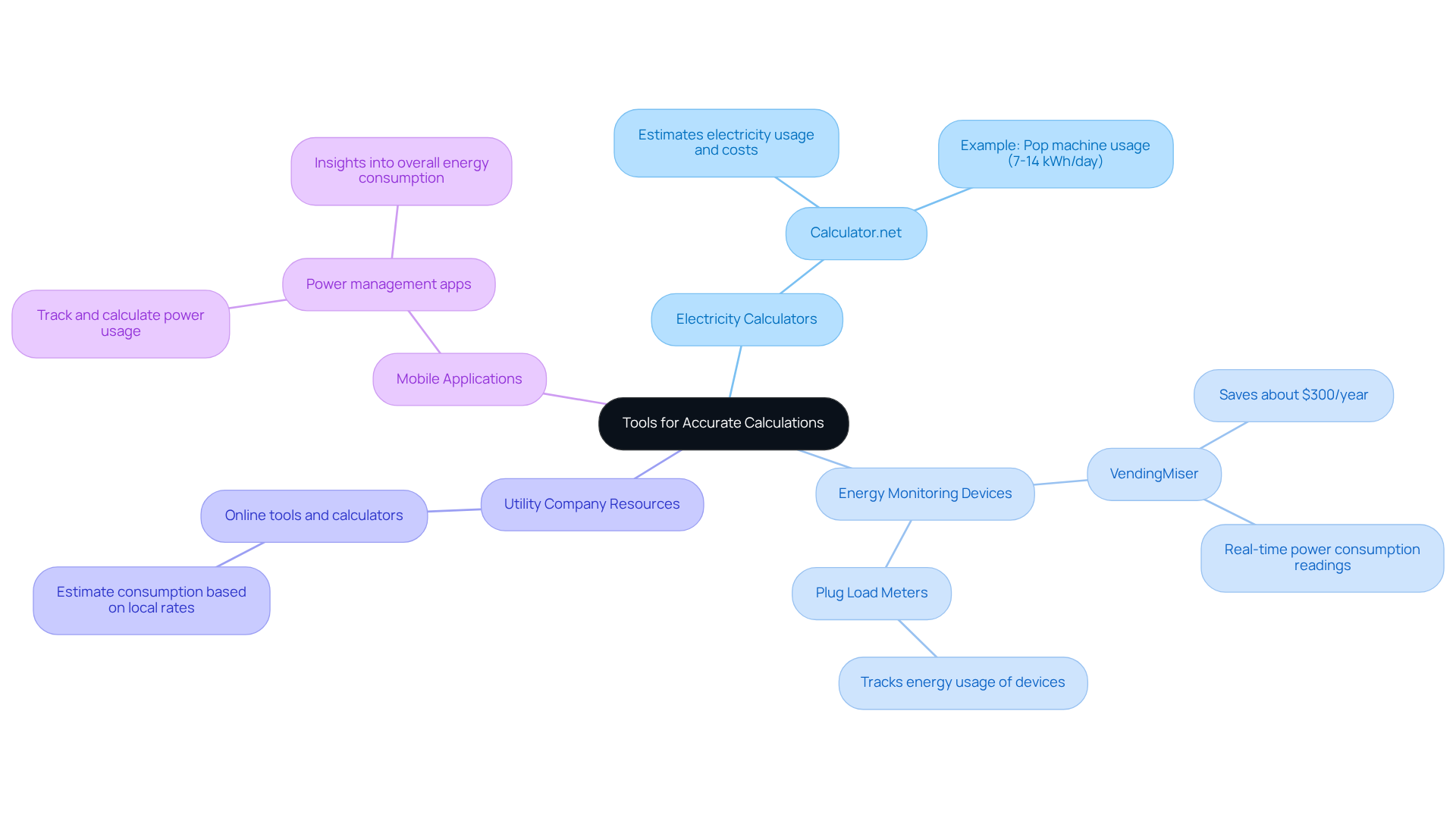Overview
Ever wondered how much electricity your pop machine really uses? It’s a good question! Typically, these machines consume between 2,500 and 4,400 kWh annually, depending on their type and features. That’s quite a range, right?
Here’s the thing: understanding your machine's energy consumption is key. This article walks you through a simple, step-by-step guide to calculating energy costs. You’ll want to consider things like:
- The power rating
- How many hours it runs
- Its efficiency
These factors can really help you make informed decisions about your energy use and find potential savings.
So, let’s break it down and get you equipped to tackle those energy bills with confidence!
Introduction
You know, understanding how much energy vending machines use is becoming really important. With businesses looking to cut costs and be more sustainable, those little machines can actually rack up quite the electricity bill. They typically consume between 2,500 and 4,400 kWh a year, depending on their features and how often they're used.
So, with energy prices on the rise and new efficiency standards coming into play, how can you keep track of your vending machines' electricity usage? It’s not just about meeting your operational needs; it’s also about saving some cash.
Here’s the thing: by calculating and managing that energy consumption effectively, you can make a real difference. It’s all about finding ways to optimize your machines so they’re not just running but running efficiently. Let’s break it down and see how you can take action today!
Understand Electricity Consumption Basics
Let’s discuss how much electricity does a pop machine use in terms of electricity usage for automated dispensers. You know, those machines that keep snacks and drinks handy? Well, their power consumption is measured in kilowatt-hours (kWh). This simply tells us how much energy they use over time. For example, if a device runs at 1,000 watts (or 1 kW) for one hour, it’s going to use 1 kWh.
This is super important for figuring out how much electricity does a pop machine use, especially since these machines often operate around the clock, 24/7. Now, looking ahead to 2025, we can estimate how much electricity a pop machine uses, with a typical automated dispenser consuming between 2,500 to 4,400 kWh each year. Refrigerated versions usually sit at the higher end of that range. Understanding these basics helps you make , including how much electricity does a pop machine use.
Here’s the thing: energy expert Michael Benson points out that standard units consume about 7 kWh per day, which raises the question of how much electricity does a pop machine use. But if you’re dealing with more advanced machines, they can use up to 15 kWh daily. And don’t forget about chilled dispensing units; their monthly electricity costs typically range from $16 to $30.
Getting a handle on these concepts will set you up nicely for the calculations that come next.

Identify Factors Affecting Electricity Usage
Let’s discuss vending machines and how much electricity does a pop machine use. You might not think about it, but several factors can really impact how much electricity does a pop machine use.
First off, think about the type of equipment. Refrigerated units are a lot more energy-hungry than non-refrigerated ones. For example, a soda dispenser can guzzle between 2,500 to 4,400 kWh a year, while a standard snack unit usually uses much less. Overall, vending machines incur yearly electricity costs that can range from $300 to $700, highlighting the importance of understanding how much electricity does a pop machine use. That’s a pretty big deal when you consider your bottom line!
Next up, let’s look at attributes. If a machine has fancy features, it can change its power profile. Take LED lighting, for instance; it uses way less power compared to old-school fluorescent bulbs. Plus, things like occupancy sensors can really cut down on power usage when the machines aren’t in use. That’s a win for efficiency!
Now, consider the ambient conditions. The temperature around your vending machines matters a lot. If they’re in a hot spot, they’ll need extra power to keep everything cool inside, which means higher electricity costs.
And don’t forget about operational hours. If machines are running 24/7, they’re going to consume more power. Turning them off during non-peak hours can lead to some . By understanding how much electricity does a pop machine use, you can better manage your machines’ power needs.
Oh, and here’s something important: new minimum efficiency standards for beverage dispensing units kicked in back in 2019. These are aimed at boosting resource efficiency across the board. By using energy-efficient tech, you could cut energy consumption by 35% to 75%. That’s a great step toward sustainability!
So, what can you do? Start by evaluating your vending machines and their features. Look for ways to upgrade to more efficient models or add smart technology. Every little bit helps!

Calculate Electricity Costs Step-by-Step
Calculating how much electricity does a pop machine use for its costs is easier than you might think. Let’s break it down step by step.
-
First off, you need to determine the power rating. Check the device's specs for its wattage. For example, if your dispenser uses 400 watts, that’s your starting point.
-
Next, let’s calculate daily usage. Multiply the wattage by the number of hours the device runs each day. If it’s operating 24 hours, you’d do:
400 watts × 24 hours = 9,600 watt-hours (or 9.6 kWh) -
Now, onto monthly usage. Take that daily usage and multiply it by the number of days in a month, which is roughly 30:
9.6 kWh × 30 days = 288 kWh -
After that, you’ll want to find your electricity rate. Check your electricity bill for the cost per kWh. If your rate is $0.10 per kWh, you’d calculate:
288 kWh × $0.10 = $28.80 -
Finally, you’ve got your total monthly cost. This gives you a good idea of when running your unit. Just remember to adjust the wattage and hours based on your specific equipment and usage patterns. It’s all about keeping it simple and straightforward!

Utilize Tools and Resources for Accurate Calculations
Want to make your calculations easier? Check out these handy tools and resources:
- Electricity Calculators: Websites like Calculator.net offer free calculators that help you estimate your electricity usage and costs based on your devices. For instance, many people wonder how much electricity does a pop machine use, which is typically between 7 and 14 kWh per day. These calculators can quickly show you how your power usage impacts your wallet.
- Energy Monitoring Devices: Consider gadgets like the VendingMiser or plug load meters. They give you real-time readings of your vending machine’s power consumption. The VendingMiser can save you about $300 a year on electricity, making it a smart choice for spotting energy-wasting habits and saving you money over time.
- Utility Company Resources: Many utility companies have online tools and calculators to help you estimate your consumption and costs based on local rates. These can really shed light on your specific utility expenses.
- Mobile Applications: Power management apps can track and calculate power usage for various devices, including vending machines. They simplify the process and provide insights into your overall energy consumption, helping you manage your operations better.
By using these tools, you’ll get a clearer picture of your vending machine’s energy consumption. This knowledge can lead to smarter decisions and down the line.

Conclusion
Understanding how much electricity your pop machines use is super important for keeping your energy costs in check. By getting a handle on kilowatt-hours and the main factors that affect energy consumption, you can really optimize your vending machines. This kind of knowledge not only helps with budgeting but also plays a part in those bigger sustainability goals we all care about.
Here’s the thing:
- The type of machine you have
- Its features
- The environment it’s in
- How often it’s running
All make a big difference in energy usage. For example, refrigerated machines tend to use way more power than non-refrigerated ones. But don’t worry—switching to energy-efficient technologies can really help you save some cash. Plus, using tools like electricity calculators and energy monitors can make tracking your consumption a breeze.
So, what can you do? Being proactive about understanding and calculating your electricity costs can lead to smarter decisions and better financial outcomes. Embracing energy efficiency not only helps you as an operator but also fits into the global movement towards sustainability. Taking steps to evaluate and boost your vending machine’s efficiency is a great way to save money and care for the environment.
Frequently Asked Questions
How is electricity consumption measured for pop machines?
Electricity consumption for pop machines is measured in kilowatt-hours (kWh), which indicates how much energy they use over time.
How much electricity does a typical pop machine use in a year?
A typical automated dispenser consumes between 2,500 to 4,400 kWh each year, with refrigerated versions usually at the higher end of that range.
What is the daily electricity consumption for standard and advanced pop machines?
Standard pop machines consume about 7 kWh per day, while more advanced machines can use up to 15 kWh daily.
What are the monthly electricity costs for chilled dispensing units?
The monthly electricity costs for chilled dispensing units typically range from $16 to $30.
Why is it important to understand electricity consumption for pop machines?
Understanding electricity consumption helps make informed decisions about energy use and costs associated with operating pop machines.
List of Sources
- Understand Electricity Consumption Basics
- How Much Electricity Does a Vending Machine Use a Month? - Vending Locator (https://vendinglocator.com/blog/how-much-electricity-does-a-vending-machine-use-a-month)
- Kilowatt-Hours (kWh): Understand the Key Measurement (https://palmetto.com/home-electrification/kilowatt-hours-explained)
- The Truth About Vending Machine Energy Costs (And How DFY Vending Minimizes Them) (https://dfyvending.com/vending-machine-energy-costs)
- How much electricity do vending machines use? (https://quora.com/How-much-electricity-do-vending-machines-use)
- How Much Electricity Does a Vending Machine Use? (https://dfyvending.com/vending-machine-electricity-usage)
- Identify Factors Affecting Electricity Usage
- The Truth About Vending Machine Energy Costs (And How DFY Vending Minimizes Them) (https://dfyvending.com/vending-machine-energy-costs)
- Business Energy Advisor | Vending Machines (https://esource.bizenergyadvisor.com/article/vending-machines)
- Goals for Sustainable, Eco-Friendly Vending Machines (https://vending.com/blog/earth-day-and-vending-sustainability-goals)
- How Much Electricity Does a Vending Machine Use? (https://dfyvending.com/vending-machine-electricity-usage)
- Calculate Electricity Costs Step-by-Step
- How Much Electricity Does a Vending Machine Use a Month? - Vending Locator (https://vendinglocator.com/blog/how-much-electricity-does-a-vending-machine-use-a-month)
- How to Calculate Vending Machine Costs: Operating Expenses Explained (https://finmodelslab.com/blogs/operating-costs/vending-machines?srsltid=AfmBOoogDT6cIDY_cMauBjMfTWJbDYiqp0rcD9YH27C2uXfRKmhz1KGm)
- Electricity Rates for Every State - EnergyBot (https://energybot.com/electricity-rates)
- Electricity Rates by State (August 2025) (https://poweroutage.us/electricity-rates)
- The Truth About Vending Machine Energy Costs (And How DFY Vending Minimizes Them) (https://dfyvending.com/vending-machine-energy-costs)
- Utilize Tools and Resources for Accurate Calculations
- Are vending machines energy efficient? (https://quora.com/Are-vending-machines-energy-efficient)
- Vending Machine Statistics in 2023 - Vending Locator (https://vendinglocator.com/blog/vending-machine-statistics)
- Tools to Enhance EnergySavings (https://vendingmarketwatch.com/equipment/replacement-parts-retrofit-devices/article/10257078/tools-to-enhance-energy-savings)
- The Benefits of Energy Monitoring for Your Home - Revise (https://callrevise.com/benefits-of-energy-monitoring-for-your-home)
- Estimating Appliance and Home Electronic Energy Use (https://energy.gov/energysaver/estimating-appliance-and-home-electronic-energy-use)




